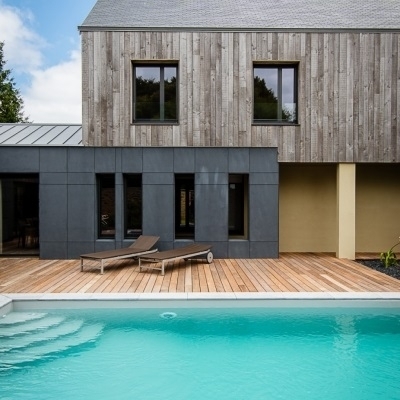What the most common building materials are doing to our planet
Published: 06/04/20 By: Mike Bekin
The construction industry currently finds itself at a green crossroads. As one of the world’s largest and most profitable industries, it’s also responsible for 23% of the world’s air pollution and a whopping 50% of both global climatic change and landfill waste according to research by construction blog Bimhow.
According to the Green Building Council, the UK construction sector uses more than 400 million tons of material a year, most of which has an adverse impact on the environment. However, construction firms can turn things around if they are able to take a serious look at the materials being used.
So how exactly are the most commonly used materials impacting our planet and what alternative materials should we be looking at for a greener future together?
Concrete
Concrete remains one of the most common building materials worldwide and with good reason – it’s cheap, durable, and (so far) plentiful.
However, cement production accounts for almost 5% of worldwide CO2 production, primarily because carbon dioxide is produced at two points during its production – the manufacturing stage and the thermal decomposition stage.
The carbon footprint of 1m3 (1 cubic metre) of concrete is around 150kg
Steel
Of all the metals used in construction, steel is amongst the most environmentally-friendly. It has a lower embodied carbon impact than concrete and generates less waste.
However, it’s still not as sustainable as wood and is heavy enough to require more energy to transport from location to location, which has a knock-on effect when it comes to carbon emissions.
The carbon footprint of 1m3 (1 cubic metre) of steel is around 18.5 tonnes.
Plastic (PVC)
As a building material, PVC is strong and has the added benefit of being quite resistant to weather, sunlight, oil and chemicals. However, it’s far from the most environmentally friendly of building materials. Oil and chlorine are used in its production (neither of which are exactly environmentally renowned) and it’s neither degradable or biodegradable.
Indeed, it’s been reported that PVC is perhaps the material that presents the most direct environmental impact of all building materials and yet over 33 million tons of it are still produced and used every year!
The carbon footprint of 1m3 of PVC is around 5 tonnes
Timber
We’ve already established that more traditional building materials are having a major impact on carbon emissions. Compared to most common alternatives, however, timber is significantly more environmentally friendly, with a material ECI per m2 of pile planking or sheet piling of just €0.19 compared to €26.44 for steel and €4.79 for PVC.
Not only that, but timber production has been proven to absorb CO2 and is significantly more renewable than steel and plastic. Indeed, according to Wood for Good, timber homes could effectively be used as ‘carbon banks’ to capture and store almost 4 million tonnes of CO2 every year!
The carbon footprint of 1m3 (1 cubic metre) of timber will depend on the specific wood used. Since timber is mostly made of carbon sucked from the atmosphere as the tree grows, the net result of using timber in your construction project will usually be negative emissions, which means your oak frame, decking, or cladding actually help to store carbon.
As an example: timber from Sweden has a net emission of 13-1502 = -1.49Kg of CO2 for every 1kg used (1m3 of Swedish Pine is about 530kg but it stores 789kg of CO2).
Wooden futures
Of course, the timber sector has suffered from something of an image problem in recent years, with some linking it to widespread deforestation. However, the vast majority of the timber used in construction is sourced sustainably, particularly when compared to other more common materials.
Timber is a versatile and surprisingly strong building material that is lighter (so puts greater ease on transportation and foundations), more sustainable and easier to use than many common alternatives. So, why are only 25% of new houses in the UK built with timber framing?
Maybe due to deeply ingrained myths and misconceptions surrounding it. But hopefully, we’ve been able to assuage some of those fears and help you to understand the environmental and economic benefits of using timber in future construction projects.
Sources
Tags: Environmental
Categories: Insights
